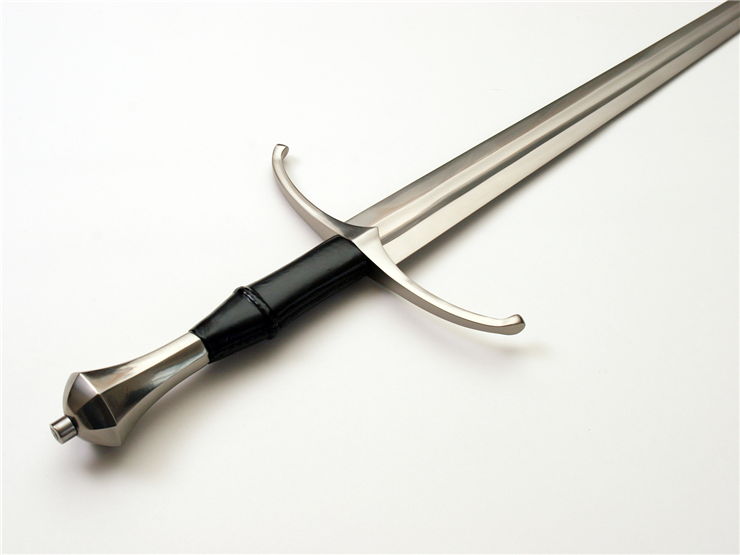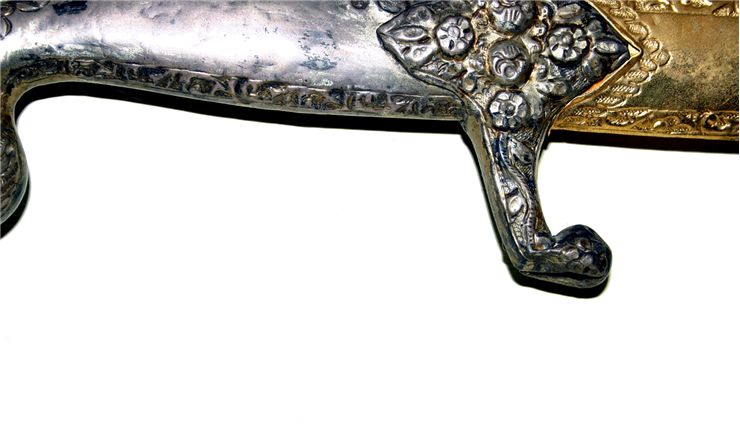History of Ancient, Chinese and Medieval Swords
A sword is a type of weapon that has a blade or edge. It is generally used for cutting or thrusting. What is precisely defined as a sword depends on the historical epoch and the geographical region from where the specific sword originates. The word sword comes from the Old English sweord, which comes from Old Norse sverð that in turn originates from a Proto-Indo-European root “swer” which means “to wound” or “to cut” which is what the sword does.
The sword was developed, for the first time, in the Bronze Age, as a larger dagger, when the construction of longer blades became technologically possible. First swords were appeared in the Middle East in the late 3rd millennium BC, and were made of arsenic copper and then in tin-bronze. They were mainly shorter than 60 cm and not too practical until the late Bronze Age because bronze is a soft metal and longer blades would bend easily. Longer swords began appearing with the discovery of steel and improved heat treatment processes. Early swords were slender and were made for thrusting while later swords were made with broader blade and were intended for both cutting and thrusting. The hilt was made from combination of leather and wood or from bronze from which the whole sword was made. At the East, sword manufacturing appeared also during Bronze Age in the time of Shang Dynasty. With improvement of process some unique technologies appeared in China like use of high tin bronze which is hard and breaks if subjected to a high stress while other cultures used lower tin bronze which bends in the same conditions.
In the 13th century BC, iron appears as the main material for sword making. It was still not quench-hardened but work-hardened by hammering in the same way as bronze. In the time of Ancient Greece and Rome, iron swords were very common and longer swords (0.75 to 1m) called spatha started appearing by the time of the Late Roman Empire. Persian armies used a sword called akinaka in the first millennium BC. Sword was originally of Scythian design but it became popular as a Persian weapon after the great Persian conquests.
During the Middle Ages technology improved which made sword a very advanced weapon but main design in Europe stayed based on the spatha sword. Quenched hardened and tempered steel became sort of a standard in the 10th century and swords of higher quality started appearing. One of the first, were Frankish 'Ulfberht' blades which were so good that Charles the Bald tried to prohibit the export of these swords, because they were used by Vikings in their attacks against the Franks. In the 9th century, in Persia, appeared curved swords or scimitars. The first crossguards appeared in 11th century and were made by Normans. At the same time, single-edged weapons became popular throughout Asia with Japanese tachi, an ancestor of the katana and continuing into series of different types of swords.
From around 1300 to 1500, improved armor started appearing so the idea of the sword had to change. Grip was lengthened, which allowed for holding of a sword with two hands, as well as the blade. These were so-called longswords. One more type was estoc which was long and thin and could thrust into the gaps between plates of armor. During the late Renaissance, civilians started carrying swords and used the in duels to “honorably” settle disputes.
In the late 16th century, rapier appeared as a civilian sword. It had a characteristic basket-shaped guard for hand protection. In the 17th and 18th centuries, the shorter smallsword became a part of fashion in Europe. In modern times, sword became a part of the ceremonial uniform in some countries and it is not used in the battle.


